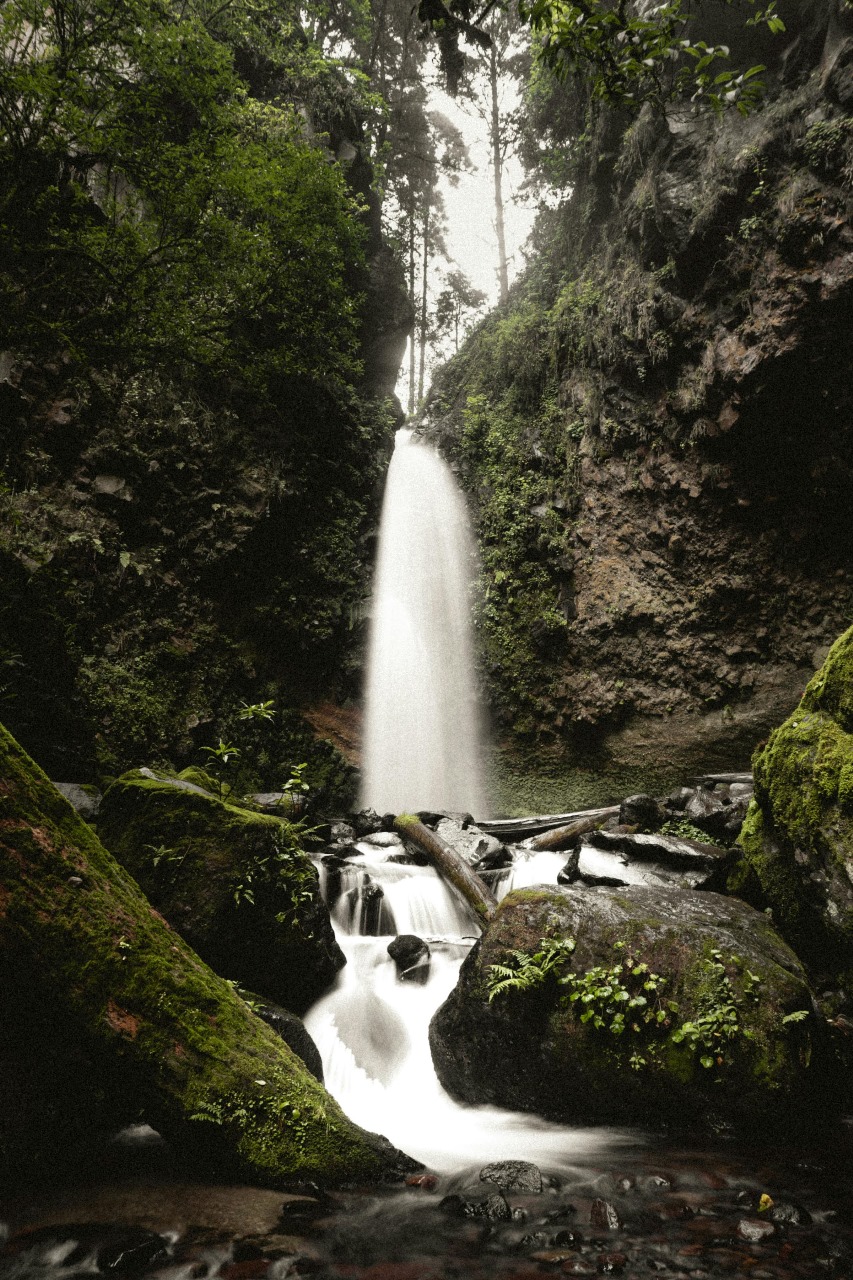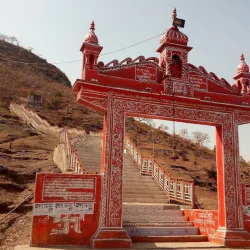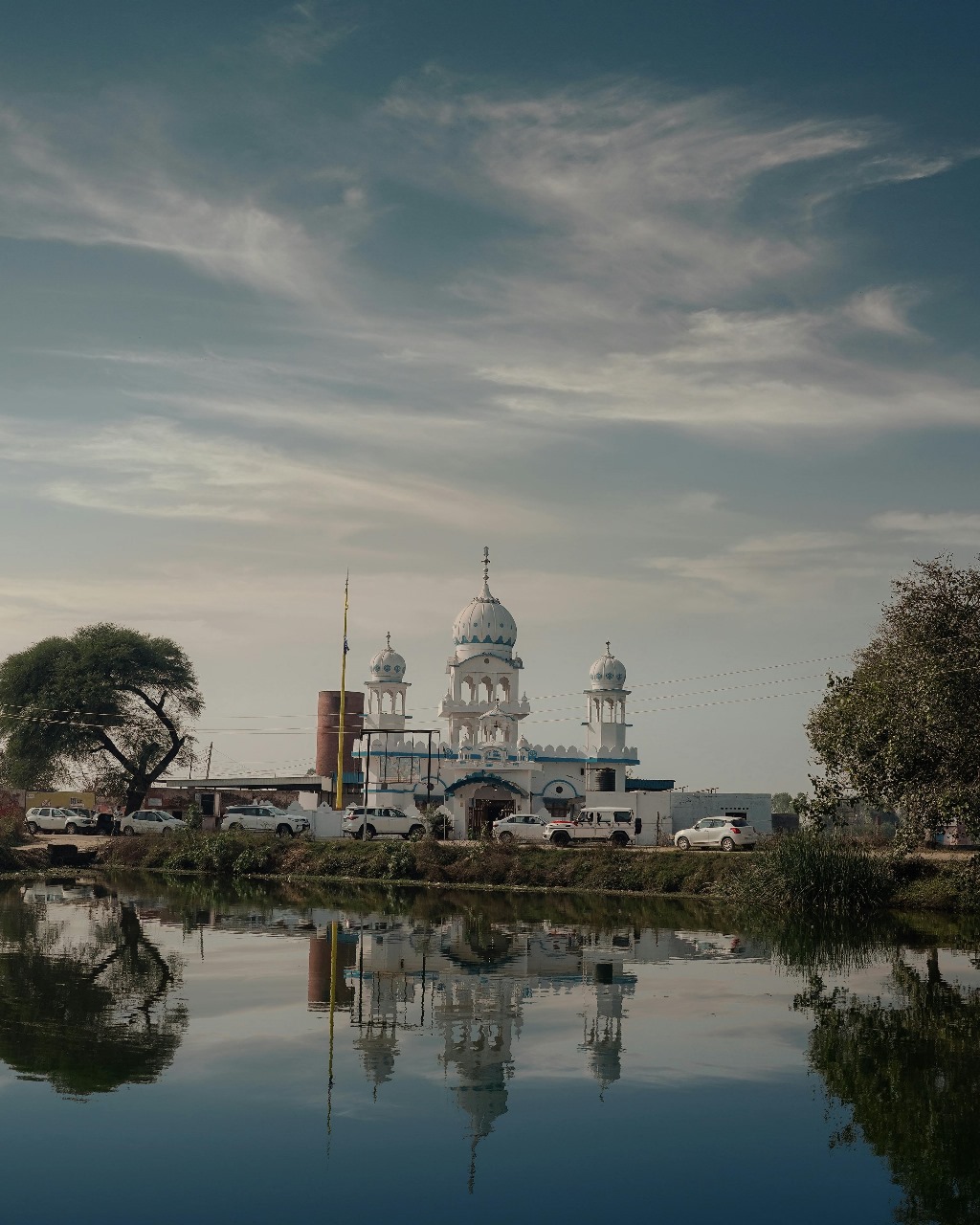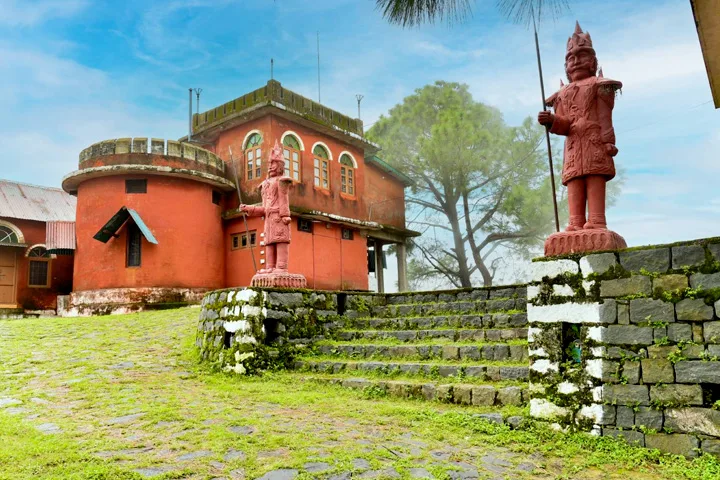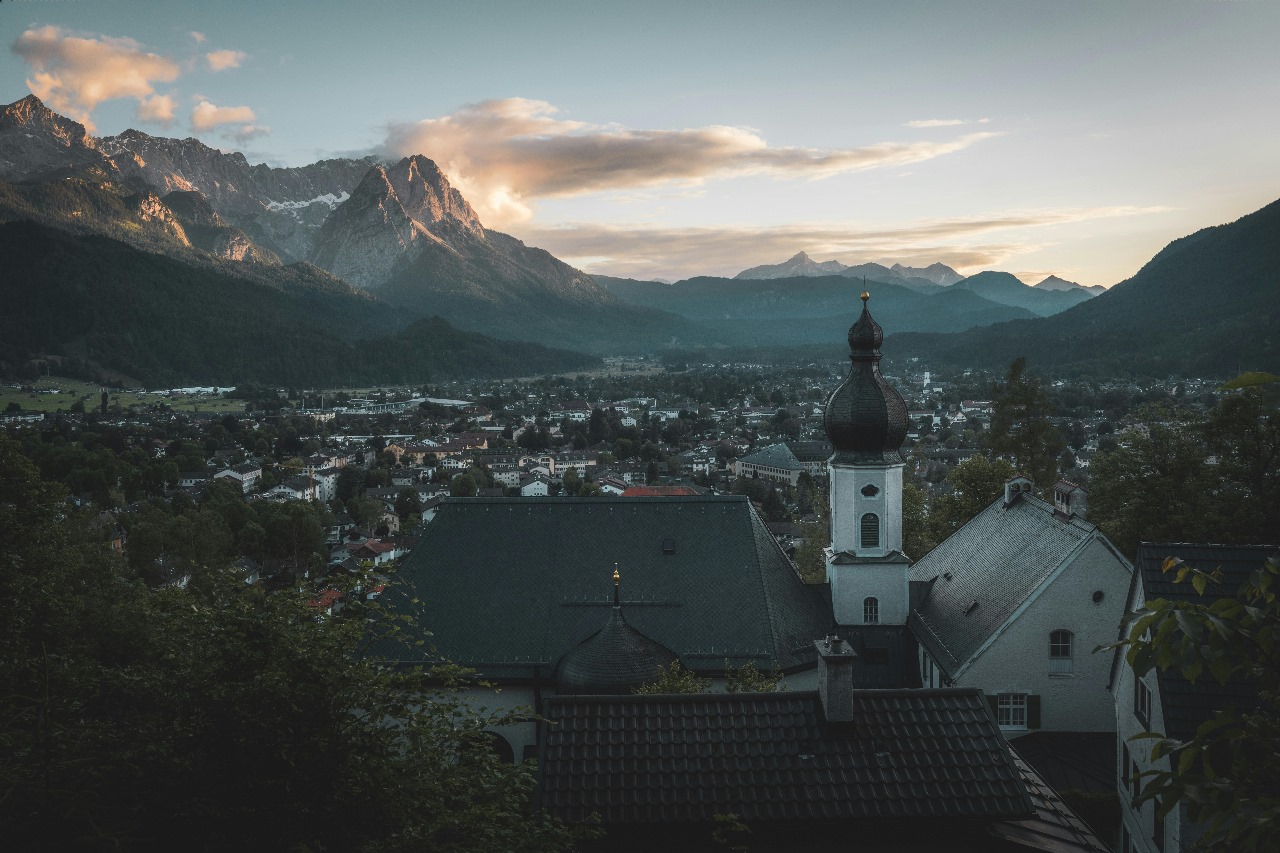Badolia Waterfall cascades majestically through the pristine forests of Himachal Pradesh, creating one of the region’s most spectacular natural attractions. This hidden gem plunges from impressive heights, sending clouds of mist into the surrounding air and creating rainbows when sunlight hits the water droplets. The waterfall’s year-round flow varies with seasons, reaching its most dramatic during monsoon months when increased water volume creates a thunderous display of natural power. The waterfall is formed by mountain streams that gather water from high-altitude snowmelt and seasonal rains, channeling it through rocky gorges and forest valleys before creating this spectacular cascade. The geological formation includes layered rock structures that have been carved by water over millennia, creating interesting pools, rock formations, and terraced levels that add to the waterfall’s visual appeal. The surrounding area features smooth boulders and natural swimming pools perfect for refreshing dips. The trek to Badolia Waterfall follows scenic mountain trails that wind through dense forests of pine, deodar, and oak trees. The approach journey becomes part of the adventure, with the sound of cascading water growing stronger as visitors near the destination. Multiple viewpoints along the trail offer different perspectives of the waterfall, allowing photographers and nature enthusiasts to capture the cascade from various angles and distances. The area around the waterfall supports rich biodiversity, with the constant moisture creating ideal conditions for various plant species, ferns, and mosses that thrive in humid environments. The forest ecosystem provides habitat for numerous bird species, small mammals, and insects that depend on the water source and lush vegetation. The combination of flowing water and dense forest creates a natural sanctuary that demonstrates the intricate relationships within mountain ecosystems. Adventure activities at Badolia Waterfall include rock climbing on nearby cliffs, rappelling down rock faces, and exploring the various pools and terraces created by the cascading water. The natural pools offer excellent swimming opportunities, particularly during warmer months when the cold mountain water provides refreshing relief. The area also serves as an excellent base camp for extended trekking expeditions into the surrounding wilderness areas.
Churdhar Trek 125km
Churdhar Trek leads to the highest peak in the outer Himalayas at 3,647 meters, offering one of the most challenging and rewarding trekking experiences in Himachal Pradesh. Known as the “King of Peaks,” Churdhar dominates the skyline of the Sirmaur district and provides breathtaking panoramic views that extend across multiple states. The trek attracts serious mountaineers, spiritual seekers, and adventure enthusiasts who seek to test their limits against this formidable mountain. The trekking route to Churdhar passes through diverse ecological zones, starting from sub-tropical forests at lower elevations and progressing through temperate forests, alpine meadows, and finally rocky terrain near the summit. The trail showcases incredible biodiversity, with opportunities to observe rare Himalayan flora and fauna adapted to different altitude zones. The changing landscape provides constant visual interest and educational opportunities about mountain ecosystems. The summit of Churdhar hosts an ancient temple dedicated to Lord Shiva, known as Chureshwar Mahadev, making this trek a significant pilgrimage journey as well as an adventure challenge. The temple’s location at such an extreme altitude demonstrates the dedication of ancient devotees who established this sacred site centuries ago. Religious ceremonies and spiritual practices continue at the temple, maintained by hardy priests who brave the harsh mountain conditions. Weather conditions on Churdhar can be extreme and unpredictable, with heavy snowfall, strong winds, and sudden temperature drops creating serious challenges for trekkers. The trekking season is limited to a few months when weather conditions are relatively stable and the paths are accessible. Proper equipment, physical preparation, and experienced guides are essential for a safe and successful trek to the summit. The views from Churdhar summit are legendary among mountain enthusiasts, encompassing peaks across Himachal Pradesh, Uttarakhand, and even distant views of the plains below. The sunrise and sunset views are particularly spectacular, with the play of light and shadow across the mountain ranges creating unforgettable natural displays. Night camping near the summit offers exceptional stargazing opportunities in the clear mountain air.
Pawdi Wala Temple (7 km)
Pawdi Wala Temple represents a hidden gem of spiritual significance nestled in the serene hills of Himachal Pradesh, dedicated to local deities that hold special importance in regional Hindu traditions. This ancient temple complex showcases traditional Himachali religious architecture and serves as a center for local cultural practices that have been preserved for generations. The temple’s peaceful setting and authentic spiritual atmosphere make it a favorite destination for devotees seeking genuine religious experiences. The temple’s unique name, “Pawdi Wala,” refers to the series of stone steps (pawdi) that lead to the main shrine, creating a symbolic journey of spiritual ascension for devotees. These carefully crafted steps wind through natural rock formations and traditional architectural elements, with each level offering different perspectives of the surrounding landscape. The ascent becomes a meditative experience, preparing visitors mentally and spiritually for their encounter with the divine. The main deity of the temple holds special significance in local mythology and religious practices, with numerous legends and miraculous stories associated with divine interventions and answered prayers. Local priests, often belonging to families that have served the temple for multiple generations, maintain traditional rituals and provide authentic spiritual guidance to visitors. The temple’s ceremonies follow ancient practices that preserve important cultural traditions. The temple complex includes several smaller shrines dedicated to various Hindu deities, creating a comprehensive spiritual environment that addresses different aspects of devotional practice. Traditional festivals and religious celebrations throughout the year bring the local community together, showcasing regional music, dance, and cultural traditions. These events provide visitors with opportunities to experience authentic Himachali culture and participate in time-honored celebrations. The natural setting of Pawdi Wala Temple enhances its spiritual appeal, with the surrounding forest providing a peaceful environment for meditation and contemplation. The sound of wind through trees, flowing streams, and bird songs creates a natural symphony that complements the temple’s sacred atmosphere. Many visitors find the combination of spiritual significance and natural beauty particularly conducive to prayer, meditation, and personal reflection.
Ponta Sahib Gurudwara (50 km)
Ponta Sahib Gurudwara stands as one of the most significant Sikh pilgrimage sites in North India, located at the confluence of the Yamuna and Tons rivers in the Sirmaur district. This sacred complex commemorates the visit of Guru Gobind Singh, the tenth Sikh Guru, who stayed here during his journey to Deccan in 1685. The gurudwara’s spiritual significance attracts thousands of devotees annually, making it a major center for Sikh religious practices and cultural activities. The main gurudwara complex features stunning architecture that blends traditional Sikh design elements with local Himachali influences. The golden dome, marble courtyards, and intricate decorative work create an atmosphere of grandeur and spiritual serenity. The complex includes the main prayer hall, community kitchen (langar), accommodation facilities for pilgrims, and various administrative buildings that support the continuous flow of visitors. The historical significance of Ponta Sahib extends beyond religious importance, as it represents a crucial period in Sikh history when Guru Gobind Singh was establishing key alliances and preparing for future challenges. Local legends describe miraculous events associated with the Guru’s stay, including healing powers and divine interventions that reinforced the site’s sacred status. The gurudwara preserves artifacts and memories of this important historical period. The langar tradition at Ponta Sahib exemplifies Sikh principles of equality and service, with community kitchens serving free meals to all visitors regardless of religion, caste, or social status. Volunteers from the local community and visiting devotees participate in preparing and serving meals, creating a spirit of unity and shared service. The organization and scale of the langar operation demonstrate the community’s commitment to hospitality and charitable service. The gurudwara’s location at the river confluence adds natural beauty to the spiritual experience, with flowing waters creating a peaceful soundtrack for prayers and meditation. The surrounding landscape includes well-maintained gardens, walking paths, and areas for quiet contemplation. Religious ceremonies, kirtan (devotional singing), and community gatherings occur regularly, maintaining the site’s active role as a living center of Sikh faith and culture.
Jaitak Fort (29 km)
Jaitak Fort stands as a proud sentinel of history, perched strategically on a hilltop in the Sirmaur district, offering commanding views of the surrounding landscape. This historic fortification played a crucial role during the Anglo-Gurkha War of 1814-1816, serving as a key military position that witnessed significant battles between British forces and Gurkha armies. The fort’s ruins tell stories of courage, strategic warfare, and the complex political dynamics that shaped the region’s history. The fort’s construction reflects the military architecture of its era, with massive stone walls, strategic watchtowers, and defensive positions designed to withstand prolonged sieges. The layout includes residential quarters, ammunition storage areas, water reservoirs, and escape routes that demonstrate the sophisticated planning involved in its design. Archaeological evidence suggests the fort’s importance as both a military stronghold and an administrative center. The Battle of Jaitak, fought in 1814, marked a significant moment in regional history when British forces under Major-General David Ochterlony attempted to capture the fort from Gurkha defenders. The fierce resistance put up by the Gurkhas, led by Bal Bhadra Kunwar, became legendary, with the battle lasting several months and resulting in heavy casualties on both sides. The fort’s strategic position made it a crucial objective for controlling trade routes and regional politics. Today, the fort ruins provide fascinating insights into medieval military architecture and historical warfare strategies. Visitors can explore the remaining structures, including portions of the main walls, foundation remains, and strategic vantage points that offer panoramic views of the surrounding valleys. Information boards and local guides provide detailed accounts of the fort’s history, the famous battle, and the broader context of the Anglo-Gurkha conflict. The site serves as an excellent destination for history enthusiasts, photography, and educational tours. The trek to the fort ruins passes through scenic landscapes, traditional villages, and terraced agricultural fields that showcase the region’s rural culture. The fort’s elevated position makes it an ideal spot for watching sunrises and sunsets, with the changing light creating dramatic effects on the surrounding mountains and valleys.
Trilokpur Temple (10 km)
Trilokpur Temple stands as one of the most revered religious sites in Himachal Pradesh, dedicated to Goddess Trilokeshwari, a manifestation of Goddess Durga. Located in the picturesque hills of Sirmaur district, this ancient temple complex attracts devotees from across North India who come to seek blessings and experience the divine energy that permeates this sacred space. The temple’s strategic location offers commanding views of the surrounding valleys and distant mountain ranges. The temple’s history spans several centuries, with local legends tracing its origins to ancient times when sages and saints established this site as a center for spiritual practices. The main temple structure showcases traditional Himachali architecture, featuring intricate wooden carvings, slate roofs, and stone foundations that blend harmoniously with the natural landscape. The temple complex includes multiple shrines, meditation halls, and facilities for pilgrims. The annual Navratri festival transforms Trilokpur Temple into a vibrant center of celebration, with thousands of devotees participating in nine days of continuous prayers, cultural performances, and religious ceremonies. The temple resonates with devotional songs, traditional music, and the rhythmic sounds of drums and bells. Local artisans and vendors set up stalls offering religious items, traditional crafts, and regional delicacies, creating a festive marketplace atmosphere. The temple’s spiritual significance is enhanced by numerous miraculous stories and divine experiences reported by devotees over the centuries. Many believe that prayers offered here are particularly effective, leading to a constant stream of pilgrims seeking solutions to personal problems, health issues, and life challenges. The temple priests, belonging to families that have served here for generations, maintain traditional rituals and provide guidance to devotees. The surrounding area offers excellent opportunities for meditation, spiritual retreats, and nature appreciation. Well-maintained gardens, peaceful courtyards, and shaded areas provide spaces for contemplation and prayer. The temple administration has developed facilities for overnight stays, allowing devotees to participate in early morning and evening prayer sessions while enjoying the serene mountain environment.
Haripurdhar (95 km)
Haripurdhar stands majestically at an elevation of 3,688 meters, representing one of the highest peaks in the Sirmaur district of Himachal Pradesh. This sacred mountain holds immense religious significance as the abode of Lord Shiva, attracting thousands of pilgrims and adventure enthusiasts throughout the year. The peak offers breathtaking panoramic views of the surrounding Himalayan ranges, including glimpses of the mighty peaks of Uttarakhand and the Shivalik hills. The ancient Haripurdhar Temple, dedicated to Lord Shiva, crowns the summit and serves as the primary pilgrimage destination. The temple’s architecture reflects traditional Himachali style, with intricate woodwork and stone carvings that have withstood centuries of harsh mountain weather. The temple complex includes smaller shrines dedicated to various Hindu deities, creating a spiritual atmosphere that resonates with the sound of temple bells and devotional chants carried by mountain winds. The annual pilgrimage season transforms Haripurdhar into a bustling spiritual center, with devotees undertaking challenging treks to seek blessings at the temple. The journey to the summit tests physical endurance and mental determination, but the spiritual rewards and stunning vistas make every step worthwhile. Local priests conduct regular prayers and ceremonies, maintaining age-old traditions that connect modern pilgrims with ancient spiritual practices. The trek to Haripurdhar passes through diverse ecological zones, from dense forests at lower elevations to alpine meadows and rocky terrain near the summit. The changing landscape provides opportunities to observe varied flora and fauna, including rare Himalayan species that thrive at different altitudes. The trail offers spectacular viewpoints where trekkers can rest and appreciate the grandeur of the surrounding mountains. Weather conditions at Haripurdhar can be extreme, with heavy snowfall during winter months making the peak inaccessible for several months. The best time to visit is during late spring through early autumn when the weather is more favorable for trekking and the mountain paths are clear of snow. The changing seasons bring dramatic transformations to the landscape, from snow-covered peaks in winter to blooming rhododendron forests in spring.
Rani Tal (10 km)
Rani Tal, translating to “Queen’s Lake,” is a pristine high-altitude lake nestled in the lap of the Himalayas, surrounded by dense forests and towering peaks. This hidden gem offers a perfect blend of natural beauty and tranquility, making it an ideal destination for those seeking respite from urban life. The lake’s emerald-green waters reflect the surrounding pine and deodar forests, creating a mirror-like surface that captivates visitors throughout the year. The journey to Rani Tal involves a scenic trek through well-marked mountain trails that wind through rhododendron groves, oak forests, and alpine meadows. The trek itself becomes part of the adventure, offering glimpses of diverse wildlife, colorful bird species, and panoramic views of distant mountain ranges. Local guides share fascinating stories about the lake’s history and the legends that surround this mystical water body. The lake holds special significance in local folklore, with stories of ancient queens who used to visit this secluded spot for meditation and spiritual practices. The serene environment and crystal-clear waters create an atmosphere of peace and contemplation that continues to attract spiritual seekers and nature lovers. The acoustic properties of the surrounding mountains amplify even the slightest sounds, from the gentle lapping of water against rocks to the melodious calls of Himalayan birds. Camping near Rani Tal offers an unforgettable experience, with clear night skies providing spectacular views of stars and constellations rarely visible in urban areas. The changing light throughout the day transforms the lake’s appearance, from the golden hues of sunrise to the deep blues of midday and the ethereal glow of moonlight on water. Photography enthusiasts find endless opportunities to capture the lake’s beauty in different seasons and lighting conditions. The surrounding ecosystem supports diverse flora and fauna adapted to high-altitude conditions. Medicinal herbs and rare alpine plants thrive in the area, while the forests provide habitat for Himalayan wildlife including black bears, leopards, and various species of pheasants. The lake’s pristine waters support aquatic life and serve as a water source for wildlife, making it a crucial component of the local ecosystem.
Simbalbara Wildlife Sanctuary (40 km)
Simbalbara Wildlife Sanctuary encompasses 27.88 square kilometers of pristine wilderness in the Sirmaur district, representing one of Himachal Pradesh’s most biodiverse protected areas. Established in 1958, this sanctuary serves as a crucial habitat for numerous endangered and rare species, making it a paradise for wildlife enthusiasts and conservationists. The sanctuary’s elevation ranges from 400 to 800 meters, creating diverse ecological zones that support varied flora and fauna. The sanctuary is renowned for being home to the elusive red jungle fowl, the ancestor of domestic chickens, which finds perfect habitat in the dense sal forests that dominate the landscape. These magnificent birds, with their vibrant plumage and distinctive calls, represent one of the sanctuary’s most prized species. The forest ecosystem also supports substantial populations of sambars, chitals, wild boars, langurs, and rhesus macaques, creating a complex web of predator-prey relationships. The avian diversity of Simbalbara is truly exceptional, with over 200 recorded bird species making it a premier birding destination. Peacocks display their magnificent plumage in forest clearings, while various species of eagles, hawks, and owls patrol the skies. The sanctuary serves as an important stopover for migratory birds, particularly during winter months when species from higher altitudes descend to the warmer forests. Ornithologists and bird photographers find endless opportunities to observe and document both resident and migratory species. The flora of Simbalbara reflects the transition zone between the plains and hills, featuring sal forests at lower elevations and mixed deciduous forests higher up. Ancient trees provide canopy cover for numerous medicinal plants and herbs that have been used by local communities for generations. The changing seasons bring dramatic transformations to the forest, from the fresh green of monsoons to the golden hues of autumn and the bare beauty of winter. Conservation efforts at Simbalbara focus on habitat preservation, wildlife protection, and community involvement. Anti-poaching measures, regular patrols, and monitoring programs ensure the safety of wildlife populations. The sanctuary also serves as a research center where scientists study animal behavior, population dynamics, and ecosystem relationships, contributing valuable data to conservation science.
Suketi Fossil Park (5 km)
The Suketi Fossil Park represents a remarkable window into prehistoric times, showcasing fossils that date back 2.5 million years to the Pliocene age. Located near Kala Amb in the Sirmaur district, this unique geological site spans across 25 hectares and contains some of the most significant paleontological discoveries in India. The park was established to preserve and display the rich fossil heritage discovered in the Saketi Formation. The fossil collection includes remains of ancient elephants (Stegodon insignis), hippopotamuses, crocodiles, tortoises, and various other extinct species that once roamed the Indian subcontinent. The most spectacular finds include complete skeletal remains of prehistoric elephants, providing valuable insights into the evolutionary history of these magnificent creatures. The fossilized remains tell the story of a time when the climate was much different, and the region supported diverse wildlife that thrived in warmer, more humid conditions. The park features well-designed display galleries where visitors can observe these prehistoric treasures up close. Interactive exhibits explain the fossilization process, the geological history of the region, and the significance of each discovery. Educational panels provide detailed information about the various species found here, their habitats, and their place in evolutionary history. The museum section houses carefully preserved specimens and offers detailed explanations of the site’s scientific importance. Research activities continue at the park, with paleontologists and geologists regularly conducting studies that contribute to our understanding of prehistoric life in the Indian subcontinent. The site has yielded important discoveries about ancient climate patterns, ecosystem changes, and species evolution. Visitors can often observe ongoing excavation work and interact with researchers, gaining firsthand knowledge about paleontological methods and discoveries. The park serves as an excellent educational destination for students, researchers, and curious travelers interested in natural history. Guided tours provide comprehensive insights into the fossils, geological formations, and the scientific processes involved in their discovery and preservation. The surrounding landscape also offers beautiful views of the Shivalik hills and provides opportunities for nature walks and photography.

